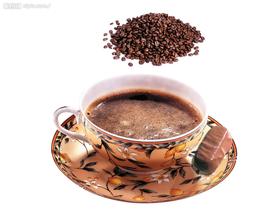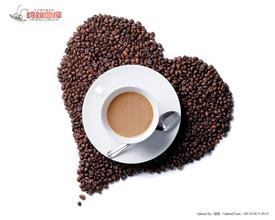The role of crema in Italian concentration Coffee tasting method
The role of crema in Italian concentration Coffee tasting method
The formation of the foam layer requires bubbles, as well as compounds or particles that like to surround these bubbles to make the structure of these bubbles stable and more elastic. The coating effect of these chemical components will involve surfactants. The formation of vesicles is mainly related to melanoidin (melanoidin). Melanoidin is a general term for a series of compounds formed during coffee roasting, and scientists know little about it.
Proteins and melanoidins can cover bubbles because they have ingredients that repel water-also known as hydrophobicity. So they approach gas rather than water, and because of their hydrophobicity, these substances are eventually adsorbed on the bubbles, forming a bubble layer.
There are other hydrophobic substances in coffee: fat / oil. The fat here is separated because "fat" is the solid form of oil (oil), which coexists in coffee.
The reasons for the disappearance of crema are grease / oil and gravity. When the surfactant dissolves in water, gravity pulls down the coffee material stored in the foam layer, which pulls the substance that covers the surface of the bubble, causing the bubble to become fragile and inelastic, and eventually burst quickly.
The speed at which the foam layer disappears mainly depends on the speed at which gravity acts. A cup of properly extracted concentrated surface foam will last longer than a cup of underextracted concentrate. This is because the overall composition of the correctly extracted concentrate will be thicker, which can be confirmed by the tactile sensation concentrated in the mouth.
If the cooking condition of espresso is Overestracted espresso, its crema color will be dark, and it will appear dark with a slightly black edge. On the other hand, if it is Under-extracted espresso, then the crema color is light, appears light golden yellow, and the texture is thin. Common examples are high cooking water temperature (above 93 degrees Celsius), slow flow rate, darker crema color, lower cooking water temperature (below 88 degrees Celsius), faster flow rate, lighter crema color. The higher the BrewingRatio of espresso, the darker the crema color, and vice versa. To put it simply, if you use more coffee powder, the smaller the espresso, the darker the crema will be. For example, Ristretto with 100% flush rate, its crema color is usually darker and must be darker than espresso with 50% flush rate. The espresso color with a relative flushing rate of 50% is also darker than the Lungo with a flushing rate of 33%. This is why many world flower draw champions (such as Yoshi Sawada) are accustomed to using triple filters to flush out more than 100% of the Ristretto as the subbase of the latte, because this can get the darkest background color and the most contrast effect.

Important Notice :
前街咖啡 FrontStreet Coffee has moved to new addredd:
FrontStreet Coffee Address: 315,Donghua East Road,GuangZhou
Tel:020 38364473
- Prev

The skills of Coffee Breaking-the Diagram of Coffee Breaking skills
Coffee brewing skills-Coffee milking skills diagram (1) place the steam pipe at the center of the steel cup, 45 degrees to the upper right, near the edge of the steel cup, with a depth of about 1 centimeter. (2) turn on the steam pipe, move the steel cup down slowly, and roll the milk up and down and slowly let the volume expand. (3) when the foam expands to eight minutes full, put the steam pipe
- Next

The origin of espresso-the secret taste of espresso
The origin of espresso-the secret taste of espresso the coffee powder of espresso should not be ground too finely, which will cause the coffee to be over-extracted, making the coffee taste bitter, on the contrary, the coffee extracted in this way will be too light. The most important sign of a good espresso is that it has a light camel color on its surface.
Related
- What brand of black coffee is the most authentic and delicious? what are the characteristics of the flavor of the authentic Rose Summer Black Coffee?
- Introduction to the principle and characteristics of the correct use of mocha pot A detailed course of mocha pot brewing coffee is described in five steps.
- Which is better, decaf or regular coffee? how is decaf made?
- How much is a bag of four cat coffee?
- How about four Cat Coffee or Nestle Coffee? why is it a cheap scam?
- Which is better, Yunnan four Cats Coffee or Nestle Coffee? How about cat coffee? is it a fake scam? why is it so cheap?
- How about Cat Coffee? what grade is a hoax? which instant coffee tastes better, four Cat Coffee, Nestle Coffee or G7 coffee?
- Process flow chart of coffee making-Starbucks coffee making process what coffee tastes good at Starbucks
- The top ten best coffee beans in the world Rose summer coffee or Tanzanian coffee tastes good
- Yunnan four cat coffee is good to drink?_four cat coffee is a big brand? four cat blue mountain coffee is fake?

